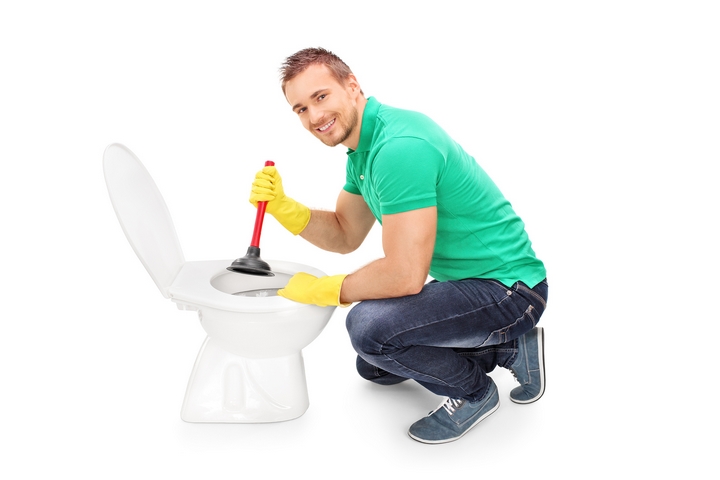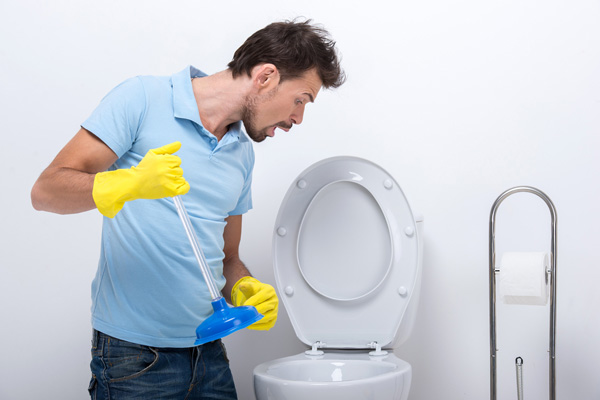Ways to Use Plunger and Drain Cleaners Properly: Expert Tips
Ways to Use Plunger and Drain Cleaners Properly: Expert Tips
Blog Article
Just how do you actually feel when it comes to How To Use Your Toilet Plunger Correctly in 5 Easy Steps?

Introduction
Correct maintenance of household drains is necessary for protecting against obstructions and making certain smooth water flow. Among the key tools in every property owner's toolkit is the bettor, together with numerous drain cleaners designed to tackle stubborn blockages efficiently. This article checks out how to use bettors and drainpipe cleaners properly to keep your drains pipes moving openly.
Section 1: Understanding Bettors
Kinds of Plungers
There are several sorts of bettors readily available, each designed for various kinds of drains pipes and obstructs. One of the most typical kinds include cup plungers, flange bettors, and accordion plungers.
Exactly How Plungers Job
Bettors deal with the principle of producing pressure and suction to remove obstructions. When appropriately used over a drain, they develop a vacuum cleaner that can take out particles or break up obstructions.
Choosing the Right Bettor
Selecting the appropriate plunger depends upon the type of drain and the nature of the clog. Mug bettors are excellent for sinks and tubs, while flange plungers are better fit for commodes as a result of their layout.
Typical Mistakes with Bettors
Staying clear of these blunders makes sure efficient plunging: incorrect seal around the drain, not enough force, and unclear bordering particles.
Section 2: Using Plungers Successfully
Prep work
Prior to diving, make certain the plunger covers the drain totally and forms a limited seal. Clear any visible particles around the drain opening.
Strategy
Start with mild plunging movements to build suction. Boost pressure progressively, making use of a consistent rhythm. Repeat as necessary till the drain gets rid of.
Fixing Tips
If diving doesn't work, try changing the seal, using petroleum jelly for a far better seal, or using a different sort of plunger.
Area 3: Recognizing Drain Cleaners
Sorts Of Drain Cleaners
Drain cleansers can be chemical or enzymatic. Chemical cleansers make use of solid chemicals to liquify obstructions, while enzymatic cleansers use all-natural enzymes to break down raw material.
Just How Drainpipe Cleaners Job
Chemical cleaners respond with blockages to liquify them, while enzymatic cleaners break down natural materials like hair and oil without harming pipes.
Security Considerations
Always wear gloves and eye protection when utilizing chemical drainpipe cleansers. Guarantee ample air flow and comply with producer directions carefully.
Eco-Friendly Alternatives
Consider utilizing vinegar and baking soft drink or enzyme-based cleansers for eco-friendly alternatives that are safer for pipes and the atmosphere.
Section 4: Utilizing Drainpipe Cleansers Effectively
Application Strategies
Pour chemical cleansers straight into the drain opening. Enable them to benefit the recommended time before purging with hot water. Chemical cleaners should sit overnight.
Precautions
Avoid blending various kinds of cleaners, as this can generate hazardous fumes. Never ever use chemical cleansers along with a plunger, as splashing can occur.
Handling Stubborn Blockages
For persistent obstructions, consider making use of a plumbing serpent or calling an expert plumbing to stop damage to pipelines.
Conclusion
Finally, comprehending how to utilize plungers and drainpipe cleansers successfully is essential for maintaining healthy plumbing systems. By choosing the right tools and techniques, house owners can deal with small blockages and stop significant pipes problems down the line.
4 DIY Ways to Unclog Drains
Wire Hanger
This age-old technique has been used by many an amateur plumber – to much success. Take any wire hanger, deconstruct its shape and leave a small hook shape on the end. Time to go fishing! Remove the shower or sink drain cover and snake the wire into the drain, wiggling and rotating it as you push it through. Dispose of the gunk that you remove and flush the drain with hot water. Rinse with a pan of boiling water for best results.
Plunger
Creating a suction in your drain can break up clogs caused by hair and soap residue build up. First, make sure you are using the correct type of plunger, one specifically for sinks or tubs. They are typically smaller than regular toilet plungers and often have a shallow suction cup. Regular plungers can work too but we’d recommend cleaning them first and finding a way to create better suction over the drain.
Baking Soda and Vinegar
This technique is a classic – and one of the most popular DIY drain unclog methods. Pour one cup of baking soda and one cup of vinegar down the drain and allow it to work its magic overnight. The next morning, flush the drain with boiling water. Repeat if necessary.
Drain Snake/Hair Clog Tool
If you know your clog is caused primary by hair, a drain snake/hair clog tool might be your best option. These tools can be purchased for under $10 at any hardware store and work well so long as the clog isn’t too deep in the drain.
https://www.callcatons.com/blog/four-diy-ways-to-unclog-drains/

Application Strategies
Pour chemical cleansers straight into the drain opening. Enable them to benefit the recommended time before purging with hot water. Chemical cleaners should sit overnight.
Precautions
Avoid blending various kinds of cleaners, as this can generate hazardous fumes. Never ever use chemical cleansers along with a plunger, as splashing can occur.
Handling Stubborn Blockages
For persistent obstructions, consider making use of a plumbing serpent or calling an expert plumbing to stop damage to pipelines.
Conclusion
Finally, comprehending how to utilize plungers and drainpipe cleansers successfully is essential for maintaining healthy plumbing systems. By choosing the right tools and techniques, house owners can deal with small blockages and stop significant pipes problems down the line.
4 DIY Ways to Unclog Drains
Wire Hanger
This age-old technique has been used by many an amateur plumber – to much success. Take any wire hanger, deconstruct its shape and leave a small hook shape on the end. Time to go fishing! Remove the shower or sink drain cover and snake the wire into the drain, wiggling and rotating it as you push it through. Dispose of the gunk that you remove and flush the drain with hot water. Rinse with a pan of boiling water for best results.
Plunger
Creating a suction in your drain can break up clogs caused by hair and soap residue build up. First, make sure you are using the correct type of plunger, one specifically for sinks or tubs. They are typically smaller than regular toilet plungers and often have a shallow suction cup. Regular plungers can work too but we’d recommend cleaning them first and finding a way to create better suction over the drain.
Baking Soda and Vinegar
This technique is a classic – and one of the most popular DIY drain unclog methods. Pour one cup of baking soda and one cup of vinegar down the drain and allow it to work its magic overnight. The next morning, flush the drain with boiling water. Repeat if necessary.
Drain Snake/Hair Clog Tool
If you know your clog is caused primary by hair, a drain snake/hair clog tool might be your best option. These tools can be purchased for under $10 at any hardware store and work well so long as the clog isn’t too deep in the drain.
https://www.callcatons.com/blog/four-diy-ways-to-unclog-drains/

I ran across that post about How to Use a Plunger to Unclog a Toilet or Drain while scouting around the internet. Are you aware of somebody who is enthusiastic about the topic? Please feel free to promote it. Thank-you for taking the time to read it.
Click Here To Find Out More Report this page